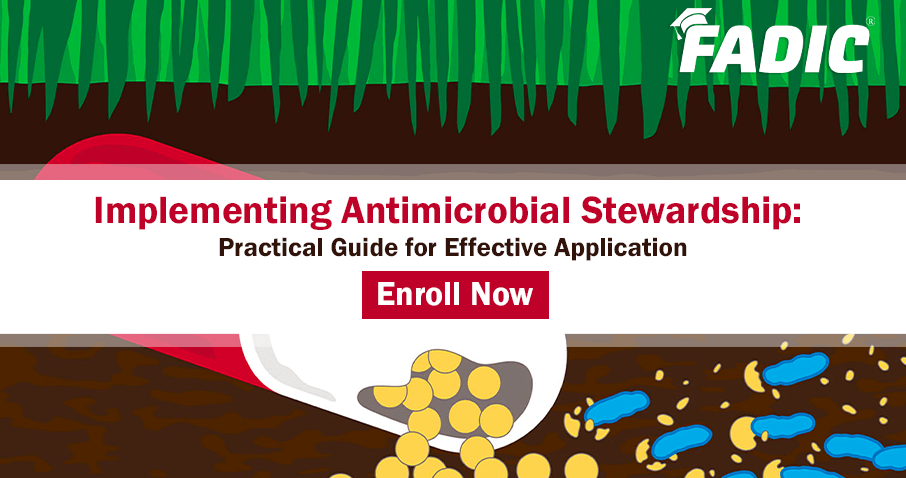
Overview
Antimicrobial Stewardship in Practice: A Guide to Effective Implementation
Title: Advancing Antibiotic Stewardship: Strategies for Success
English Language
Antimicrobial Stewardship Program Description
- Embrace the Antimicrobial Stewardship Program: A Comprehensive Strategy
Antimicrobial stewardship represents a coordinated approach that encourages the judicious use of antimicrobials, including antibiotics. - Antibiotic Stewardship program enhances patient outcomes, combats microbial resistance, and curtails the proliferation of infections triggered by multidrug-resistant pathogens.
- The misuse and overuse of antimicrobials pose significant global public health challenges. As infectious organisms develop resistance to the drugs intended to eradicate them, these medications lose their effectiveness.
- Patients afflicted with antimicrobial-resistant infections tend to experience prolonged, costlier hospital stays and face an increased risk of mortality.
- Discover the principles of antimicrobial stewardship and its practical application at both patient care and organisational levels.
| What You Will Get Every Week (Lesson Planning) | |||
| Online Lesson | Workshop / Project | Mentor Support | Reviewer |
| (2-3 Hours) per week | (60 Minutes) per week | Every week |
Review the answers with feedback
|
What You Will Learn
1. Master Clinical Microbiology Basics:
- Learn about Gram stain and bacterial shapes.
- Understand the body’s good bacteria and potential harmful effects.
- Discover effective antimicrobial agents for various bacteria.
- Study resistance issues related to different bacteria
2. Unlock the Secrets of Antimicrobial Clinical Pharmacology:
- Understand the basics of anti-infective pharmacology.
- Discover classifications of anti-infectives, covering how they work, resistance, activity spectrum, common treatments, side effects, and drug interactions.
- Explore the reasoning behind choosing specific drugs for different organisms
3. An Introduction to the Pharmacokinetics of Antimicrobial Agents:
- Define the pharmacokinetics of antimicrobials in an accessible manner.
- Familiarise yourself with the various pharmacokinetic parameters.
- Understand the influence of pharmacokinetic parameters on antimicrobial agents.
- Learn about the pharmacokinetics within special populations in a straightforward way
4. A Comprehensive Overview of Antimicrobial Agent Pharmacodynamics:
- Understand the different pharmacodynamic parameters and their effects on drug dosing in an accessible manner.
- Gain insights into the distinctions between various pharmacodynamic patterns of antimicrobial agents.
- Learn about alternative dosing strategies employed to optimize drug dosing in a straightforward way.
- Become familiar with the concepts of synergism and antagonism in antimicrobial combinations
5. Essential Guide to Infectious Diseases Treatment Guidelines:
- Sepsis
- Upper Respiratory
- Lower Respiratory
- Skin and Soft Tissue Infections
- GIT Infections
- Bone and Joint Infections.
- Urinary Tract Infection
- Meningitis
- Intra-abdominal Infections
- Surgical Prophylaxis
- Intravascular Catheter‐Related Blood Stream Infections
6. All About Antifungals From Guidelines to Bedside
- Recognize the differences between yeasts, moulds, and dimorphic fungi.
- Describe the classifications of antifungals.
- Select and discuss the rationale for drugs of choice for the various organism.
- Describe the clinical application of PK/PD parameters in daily practice.
7. Achieving Success with Antimicrobial Stewardship Implementation:
- Insights from Alexander Fleming’s Nobel Lecture and the Future of Antimicrobial Resistance.
- Examine thought-provoking quotations from Fleming’s influential Nobel Prize lecture.
- Recognise the alarming projection of 10 million yearly deaths by 2050 as a consequence of antimicrobial resistance.
- Investigate the aims of antimicrobial stewardship in healthcare.
- Comprehend the critical function of antimicrobial stewardship in preventing and controlling antibiotic resistance
8. Understanding Antimicrobial Guidelines and Antibiotic Policy:
- Essential Tips for Writing Antimicrobial Treatment Guidelines
- Key Steps to Prepare an Effective Antibiotic Policy
9. Antimicrobial Stewardship Program Intervention
- Front-end strategies
- Back-end strategies
- The other Supplemental Strategies
10. Measuring Antimicrobial Stewardship Outcomes
- Understand the Clinical Outcomes.
- Know more about the Economical Outcomes.
- Understand the Resistance Outcomes.
- Learn how to make Prioritisation of program components
- How Restricted Antimicrobials are Managed
11. Initiation of the Antibiotic Stewardship Program
- Examine elements of ASP.
- Prioritise program components based on available resources for smaller vs larger institutions.
- Antimicrobial Stewardship Programs Metrics Examples
12. Understanding the Hospital Antibiogram
- Review the CLSI M39 guidelines for antibiogram Development.
- Discuss utilising a hospital antibiogram to guide empiric antibiotic selection and detect bacterial resistance patterns.
- Describe how individual and hospital antibiogram may foster prudent antimicrobial prescribing and optimise antimicrobial stewardship.
13. Antimicrobial Stewardship Committee
- Learn how to establish Stewardship Multidisciplinary Team
- Define the term of reference “TOR.”
- Discuss the antimicrobial stewardship committee TOR.
- Establish the components of ASP committee TOR.
- Identify the role of the ID pharmacist in the ASP committee.
- Know more examples of other committees’ TOR.
14. Healthcare-Associated Infection Control and Prevention Care Bundles
- Discuss the goals of infection control programs and the types of infection prevention efforts often employed.
- Indicate which types of Multiple Disease Resistant Organism (MDRO) infections are frequently identified in small hospitals.
- Describe a small hospital Infection Control program.
- Potential Indicators for Evaluating Antimicrobial Stewardship Programs
15. Multidrug-Resistant Organisms: Detection, Epidemiology, and Management
- Discuss the mechanisms of resistance behind common multidrug-resistant(MDR) pathogens.
- Know the microbiology challenges associated with the identification of multidrug-resistant bacteria.
- Learn the prevalence and epidemiology of multi-drug resistance (MDRs).
- Understand the current evidence-based strategies in the management of invasive multidrug-resistant bacteria.
FADIC Online Activities
FADIC Antimicrobial Stewardship Initiatives
- FADIC Antimicrobial Stewardship Program Implementation initiatives for helping all organisations to apply stewardship effectively.
- In addition to providing all resources to help you apply for the program successfully.
- Give you the consultation needed to help you to be a champion in stewardship.
- Support you with tools to help you apply stewardship.
- Help you to choose the best intervention method for your institution.
- Guide you in choosing the suitable metrics to measure stewardship outcomes.
Finally, Learn How to start Antimicrobial Stewardship in your institution.
“Learn How to Apply Antimicrobial Stewardship in Acute Care from A to Z”
Acute Care Setting

As we all know, With Road Map Course, you will Learn How to Apply Antimicrobial Stewardship in Acute Care from A to Z”.
Enhance your learning with the FADIC Mentorship Reviewer System. A dedicated mentor will guide you through your projects and workshops, providing personalized feedback to help you succeed.
Maximize your learning with downloadable and printable FADIC handouts. Study effectively and independently at your own pace.
Stay Ahead with FADIC: 24-Month Access to All Updates and Course Materials

Stay updated with FADIC: Starting from your registration date, you will enjoy 24 months of full access to all course materials, including the latest updates and course content.
Program Director
Dr Rasha Abdelsalam is the CEO of FADIC. She is doing her PhD in Antimicrobial Stewardship Before and During the COVID-19 pandemic in the United Kingdom. She read more than 8,000 papers on Antimicrobial Stewardship. She was in Tanta university hospital, Egypt. In 2013, she received TQM from an American university, BCPS, CPHQ, and an M.Sc. in Clinical Pharmacy. She received certification from SIDP. She obtained the add qualification from the American Board in infectious disease. Led MM CBAHI Saudi accreditation. Established stewardship committee and implementation in MCH, Makkah, Saudi Arabia.Dr. Rasha Abdelsalam

She shared in-item exam writing for BCIDP Exam. She shared as a reviewer in infectious diseases PSAP, IDSAP, authorship of the ACCP Pharmacotherapy Mock Exam Book, and authorship published around 20 papers. One paper about the vision of 2030 of the general pharmaceutical department in Saudi Arabia. She received teaching and learning TLC certification from ACCP academy. Moreover, a consultant on personal, professional, stewardship leadership, and research. Share in strategic planning, hospital accreditation, and stewardship education in the united kingdom.
Hashtags
#AntimicrobialStewardship #InfectionPrevention
#AntibioticResistanceFighters #SmartAntibioticUse #AntibioticGuardians
#PreserveAntibiotics #StewardshipLeaders
#AntibioticStewards #InfectionControlChamps #AntimicrobialStewardshipPrograms #AntibioticStewardship
Related Courses
- Antimicrobial Stewardship Fellowship Program
- Antimicrobial Stewardship Program in Acute Care Setting
- Patient Education and Counseling Program
- ABC of Bacteria Course
Hashtags
1. #antimicrobial stewardship, antimicrobial stewardship certification
2. #what is antimicrobial stewardship
3. #antimicrobial stewardship UK, NICE antimicrobial stewardship
4. #antimicrobial stewardship meaning, PHE antimicrobial stewardship guidelines
5. #antimicrobial stewardship NICE, antimicrobial stewardship program
6. #antimicrobial stewardship NHS
7. #antimicrobial stewardship action plan
8. #antimicrobial stewardship program, UNMC antimicrobial stewardship
9. #antimicrobial stewardship example, antimicrobial stewardship definition
10. #why antimicrobial stewardship is important
11. TJC antimicrobial stewardship, joint commission antimicrobial stewardship 2023, CMS antibiotic stewardship, IDSA antibiotic stewardship guidelines, antibiotic stewardship
12. CMS antimicrobial stewardship, what is the goal of antimicrobial stewardship
13. antibiotic stewardship, antibiotic stewardship program
14. CDC antibiotic stewardship training
15. antibiotic stewardship powerpoint presentation
16. what is a possible benefit of antibiotic stewardship practices
17. what are 3 types of antibiotic stewardship interventions?
18. antibiotic stewardship guidelines, core elements of hospital antibiotic stewardship programs.
If you have any inquiry, please contact WhatsApp.

-
1- Introduction of Antimicrobial Stewardship
- Welcome to Antimicrobial Stewardship Program
- Clinical Quotes from Alexander Fleming Nobel Prize Lecture
- UK Report for 2050 Mortality of Antimicrobial Resistance
- History of Antimicrobial Stewardship
- Goals of Antimicrobial Stewardship
- Systematic Thinking in Potentially Infected Patients
- Antimicrobial Stewardship Algorithms
- FADIC Descriptive Study in Antimicrobial Stewardship Program
- Antimicrobial Stewardship Workshop 1
-
2- Microbiology of Bacteria
- Microbiology Introduction
- Staphylococcus
- Streptococcus
- Haemophilus Influenzae, Neisseria Meningitidis
- E. coli
- Chlamydia, Mycoplasma, and Legionella
- Anaerobes Organisms
- Microbiology Resources
- Summarized Bacterial Types
- Gram-Positive Vs. Gram-Negative Bacteria
-
3- Clinical Pharmacology of Antimicrobials - Part 1
- Pharmacology of the Penicillin
- Beta lactams: Penicillin
- Penicillin and the Cell Wall
- Penicillin Allergy
- Case Scenario
- Cephalosporins Classification
- Meropenem, Imipenem
- Vancomycin
- Polymyxin
- Polymyxin PK and Case Scenario
-
4- Clinical Pharmacology of Antimicrobials - Part 2
- Fluoroquinolones Safety Alerts
- Metronidazole
- Nitrofurantoin and Fidaxomicin
- Sulfamethoxazole Trimethoprim
- Fosfomycin
- Antimicrobials for Animals
- How to select Antibiotics
- Tedizolid
- Ceftazidime/Azebactam
- Ceftazidime/Azebactam
-
5- Pharmacokinetics and Pharmacodynamics
- Pharmacokinetics Basics
- Absorption, Distribution, Metabolism, and Elimination (ADME) of Antimicrobials
- Therapeutic Drug Monitoring
- The Role of Pharmacokinetics and Antimicrobial Stewardship
- Pharmacokinetics Mobile Applications
- Understanding the pharmacodynamics of antimicrobials
- Pharmacodynamics Basic Definitions
- Application of Antimicrobial Pharmacodynamics
- Bacterial resistance and pharmacodynamics
- Antimicrobial Stewardship and Pharmacodynamics
-
6- Project 1 of ID Clinical Case Presentaion
- Project 1 of ID Clinical Case Presentation
-
7- Antimicrobial Stewardship Guidelines - Part 1
- Upper Respiratory Tract Infection “URTIs”
- The Pathogenesis of Urinary Tract Infections
- Lower Respiratory Tract Infection “CAP”
- Lower Respiratory Tract Infection “Hap and VAP”
- Acute cystitis
- Acute Pyelonephritis
- Antimicrobial Stewardship Workshop 6
-
8- Antimicrobial Stewardship Guidelines - Part 2
- Catheter Related Bloodstream Infection
- Antimicrobial Prophylaxis & Surgical Site Infection
- SSTI (Impetigo, Erysipelas, and Cellulitis)
- SSTI (Necrotizing fasciitis, and Diabetic foot infection)
- Antimicrobial Stewardship in SSTI
- Antimicrobial Stewardship Workshop 7
-
9- Antimicrobial Stewardship Guidelines - Part 3
- Comparison of SIRS, SOFA & qSOFA
- Antibiotic Stewardship in Sepsis Management
- OLD Versus NEW Sepsis Definitions
- Antimicrobial Stewardship Workshop 9
-
10- Antifungal Stewardship
- All About Antifungals From Guidelines to Bedside
- Clinical Pharmacology of Anti-Fungi
- Management of Invasive Candidiasis
- Anti-fungal Pharmacokinetics and Pharmacodynamics
- Antimicrobial Stewardship Workshop 9
-
11- Project 2 of Infectious Disease Guideline
- Project 2 of Infectious Disease Guideline
-
12- Strategies for Stewardship Intervention
- Antimicrobial Stewardship Core Strategies
- Antibiogram, De-escalation & Formulary Restriction
- IV to Oral, Prospective Audit & Antibiotic Time-Out
- Antimicrobial Stewardship Intervention Sheet
- Antimicrobial Stewardship Workshop 11
-
13- Antimicrobial Stewardship Outcomes
- Clinical Outcomes of Stewardship
- Resistance Outcome
- Economic Outcomes of Stewardship
- Prioritization “Low-Hanging Fruit”
- Prioritization “Low-Hanging Fruit”
- Antimicrobial Stewardship Workshop 12
-
14- Antimicrobial Stewardship Committee
- The P&T Committee and Antimicrobial Stewardship Subcommittee: Pivotal Roles for AMS Pharmacists
- Antimicrobial Stewardship Core Play Simulation
- Antimicrobial Stewardship Committee
- The Hospital Antibiogram
- Infection Control and Prevention
- Antimicrobial Stewardship Workshop 13
-
15- Stewardship Policy & Guidelines
- Antibiotic Policy Vs Antibiotic Guidelines
- Role of Multidisciplinary Antibiotic Stewardship Team
- Step-by-step Approach for Developing Hospital Antibiotic Guidelines
- Draft Reviews in Antibiotic Guidelines
- Examples of Antibiotic Policy and Guidelines
- Policy for Good Antibiotic Prescribing Practice
- Antibiotic Stewardship Book and Mobile Application
- A Pocket Guide to Antibiotic Prescribing
- Antimicrobial Stewardship Workshop 14
-
16- Stewardship Program Quick Win
- Antimicrobial Stewardship Journal Club
- Antimicrobial Stewardship Workshop 15
-
17- Clostridioides Difficile Infection (CDI)
- CDI Definition, Epidemiology, Pathogenesis, Risk Factors
- Diagnosis of CDI Infection
- Management of CDI, and Recurrence
- Fecal Microbiota Transfer (FMT), Investigational CDI Drugs
- Strategies for CDI Prevention and Monitoring
- Antibiotic Stewardship Toolkits
- CDI Interactive Case
- CDI Patient and Family Education
- Clostridioides Difficile Infection Workshop
-
18- Antibiotics Patient Education
- Selection of Antimicrobial Drugs
- Penicillin Allergy & Counseling
- Cephalosporin Counseling
- Vancomycin
- Tetracycline
- Tigecycline
- Macrolides
- Aminoglycosides
- Fluoroquinolones
- Metronidazole
-
19- Webinars of Antimicrobial Stewardship
- Webinar 1
- Webinar 2
-
Final Antimicrobial Stewardship Project
- Final Project of FADIC Roadmap Stewardship
-
Your Certificate
- And Finally, Your Certificate…

 Log in
Log in Sign up
Sign up







